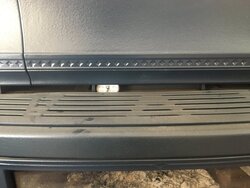Have a beautiful new Clydesdale all set up and running, going through break in fires right now. What is the best thermometer placement and what type should I use. If your recommendation is a probe type, where do you place that and how? Thanks all.
New Hearthstone Clydesdale - best thermometer placement?
- Thread starter jpl1nh
- Start date
-
Active since 1995, Hearth.com is THE place on the internet for free information and advice about wood stoves, pellet stoves and other energy saving equipment.
We strive to provide opinions, articles, discussions and history related to Hearth Products and in a more general sense, energy issues.
We promote the EFFICIENT, RESPONSIBLE, CLEAN and SAFE use of all fuels, whether renewable or fossil.


